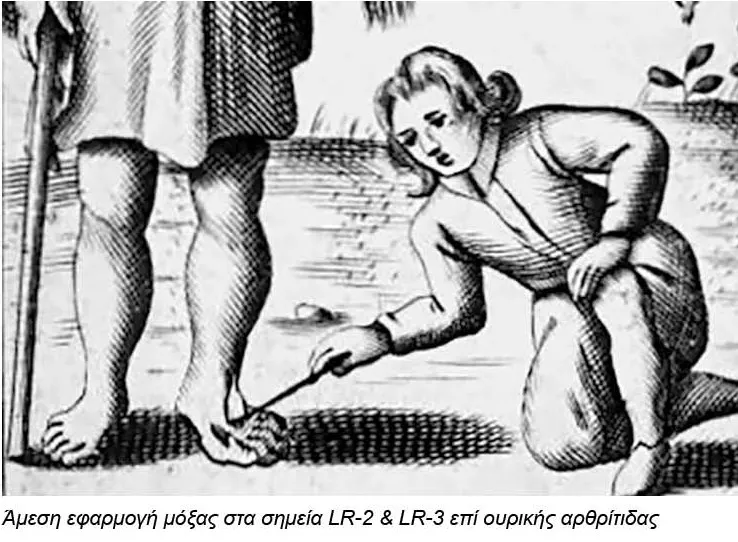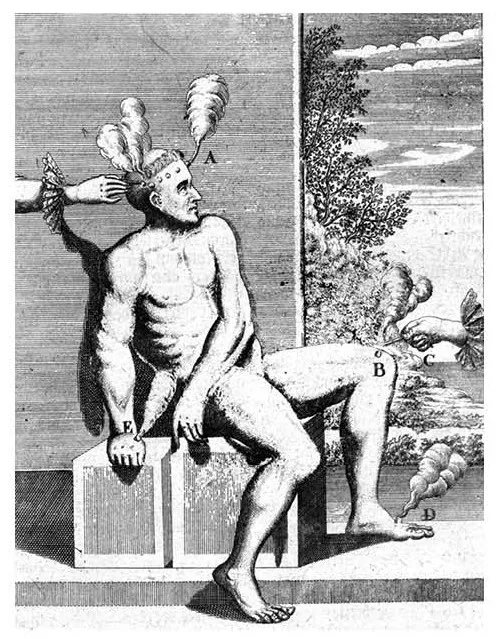Gout is a pathological condition characterized by episodes of acute inflammatory arthritis, with all typical signs of inflammation, namely swelling, heat, redness and tenderness. It is characteristic that the patient, regardless of weather conditions, sleeps with the affected foot outside the covers and comes to the clinic barefoot, as he is trying to avoid contact of the painful area even with the sheet, sock or shoe.
The metatarsophalangeal joint of the big toe is the most frequently affected site (about 50%), but not exclusively, a possibility that often goes unnoticed. The condition is caused by increased levels of uric acid in the blood. Uric acid crystallizes and the crystals are deposited in joints, tendons, bursae and adjacent tissues. The clinical diagnosis is confirmed by the detection of characteristic crystals in the synovial fluid. The same procedure is used to differentiate pseudogout from gout.
Treatment includes painkillers, non-steroidal anti-inflammatory drugs (NSAIDs), steroids or colchicine. After the attack subsides, it is recommended to reduce uric acid levels, ideally through lifestyle changes. In people with frequent attacks, systemic medication is indicated, with the aim of preventing further attacks.
Gout has increased in frequency, mainly due to increased life expectancy and changes in diet (not necessarily an improvement), with increased calorie intake and the emergence of similar diseases, such as metabolic syndrome. Gout was historically called the patrician malady, as it usually occurred after a large meal and corresponding alcohol consumption.
Chronically elevated uric acid levels (hyperuricemia) can lead to additional symptoms, such as the deposition of painless hard uric acid crystals, called tophi. Large tophi can lead to chronic arthritis, due to bone erosion. Elevated uric acid levels can also lead to precipitation of crystals in the kidneys, resulting in the formation of kidney stones and then the manifestation of uric acid nephropathy.
Factors that cause hyperuricemia are diet, genetic predisposition and reduced uric acid excretion. In approximately 90% of cases, the main cause of hyperuricemia is reduced uric acid excretion by the kidneys, while in the remaining 10% it is due to overproduction. Approximately 10% of people with hyperuricemia will develop gout at some point in their lives. Of course, the previous sentence can also be read in reverse: 90% of people with hyperuricemia WILL NEVER DEVELOP GOUT!
The consumption of coffee, vitamin C and dairy products, as well as physical exercise, appears to reduce the risk. On the contrary, the consumption of beer and alcohol in general, as well as a diet (ultra)rich in calories increase the risk of developing gout.
Uric acid disease is the newest term for the whole of clinical, laboratory and histological disorders, which are due to hyperuricemia. The term Gouty Arthritis is not always successful, because we can have Gouty Synovitis, without arthritis. In addition, hyperuricemia affects other organs, such as the heart (deposition of tophi in the coronary vessels can cause myocardial infarction), the kidneys, and the musculoskeletal system, with manifestations such as gouty tendinitis (especially in the extensor tendons of the foot), gouty bursitis (mainly of the olecranon but also in the knee and heel).
Approximately 50% of gout attacks occur without hyperuricemia, while 90% of those who experience hyperuricemia never develop gout. Therefore, measuring uric acid in the blood immediately after the onset of acute gout is completely meaningless and does not provide the slightest information.
Without treatment, an acute attack of gout usually subsides in five to seven days. 60% of patients relapse within a year. It is important to emphasize that those suffering from gout have an increased risk of hypertension, diabetes mellitus, metabolic syndrome, kidney and cardiovascular disease, an overall increased risk of death. A gout attack is reported as the cause of death of Alexander Maurocordato {Lazarou GA. “Hellenic Medicine in the Danubian Principalties” {in Greek}. Athens, ΓΛ, 2017, p. 187, footnote 491}.
The drug of choice albeit with an extremely narrow therapeutic index is colchicine, which was isolated only in 1820. However, Dioscorides, already in 70 BC, recommended the use of the seeds of the autumn crocus – Colchicum autumnale, which contain colchicine.
The recommended dose is 1mg per hour, until the crisis subsides or adverse effects appear, usually from the gastrointestinal tract. Given the importance of the disease, the intensity of the symptoms and the extremely frequent side effects of medication, it should be considered a crime to ignore other therapeutic interventions, non-pharmacological, such as acupuncture and even more so related techniques, in our case moxibustion {Lazarou GA. “Acupuncture and Orthopedics” {in Greek}. Athens, ΓΛ, 2023, p. 24-27}.


